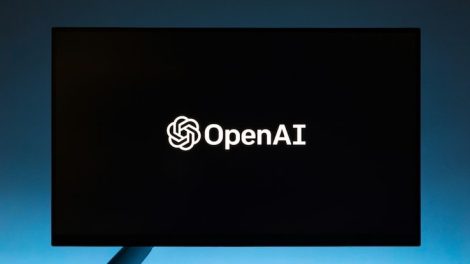OpenAI has recently made a significant move that could signal its intentions to expand beyond artificial intelligence software and services. A new trademark application filed by the company hints at potential ventures into areas as diverse as humanoid robots, smart jewelry, and other advanced technologies. This development could have a profound impact on the tech landscape, as it suggests a broadening of OpenAI’s ambitions and product offerings.

The trademark filing, submitted to the United States Patent and Trademark Office (USPTO), covers a wide array of categories. These include not just software and AI-based services but also physical hardware, including wearable devices and robotics. This move aligns with the growing trend among tech giants to diversify their portfolios and invest in hardware solutions that complement their software ecosystems.
One of the most intriguing aspects of the filing is the mention of humanoid robots. While OpenAI is primarily known for its advancements in natural language processing and machine learning models, the step toward robotics could mark a significant shift in its strategy. Humanoid robots, designed to interact with humans in natural and intuitive ways, are seen by many as the next frontier in AI applications. Such robots could be used in a variety of settings, from customer service to healthcare and even personal companionship.
The mention of smart jewelry in the trademark application is another notable development. Smart jewelry represents a growing segment of the wearable technology market, combining fashion with functionality. These devices often include features such as fitness tracking, notifications, and even biometric monitoring. OpenAI’s interest in this area suggests that it may be looking to develop AI-powered wearables that offer advanced capabilities beyond what is currently available on the market.
In addition to humanoid robots and smart jewelry, the trademark filing includes references to a range of other technological innovations. These include virtual reality (VR) and augmented reality (AR) devices, home automation systems, and advanced communication tools. The breadth of these categories indicates that OpenAI is exploring multiple avenues for growth and innovation.
The potential implications of this move are significant. By entering the hardware space, OpenAI could position itself as a direct competitor to companies like Tesla, Apple, and Amazon, all of which have made substantial investments in robotics, wearables, and home automation. Moreover, OpenAI’s expertise in AI could give it a competitive edge, enabling it to develop smarter and more intuitive devices.
The expansion into hardware also raises questions about OpenAI’s future business model. Historically, the company has focused on providing AI research and services, such as its popular language model, GPT. However, the shift toward physical products could require a reevaluation of its revenue streams and strategic priorities. Developing and manufacturing hardware is a complex and capital-intensive process, requiring significant investment in research, development, and production infrastructure.
To better understand the potential impact of OpenAI’s trademark filing, it is useful to examine the broader trends in the technology industry. Many companies are increasingly looking to integrate AI into their hardware offerings, creating seamless ecosystems that enhance user experiences. For example, Apple’s use of AI in its devices has been a key factor in the success of products like the iPhone and Apple Watch. Similarly, Amazon has leveraged AI to improve its smart home devices, such as the Echo and Ring.
By entering the hardware market, OpenAI could tap into new revenue streams and reach a broader audience. The development of AI-powered devices could also help the company showcase the practical applications of its technology, demonstrating its value to consumers and businesses alike.
However, there are also challenges associated with this move. The hardware market is highly competitive, with established players that have extensive resources and experience. To succeed, OpenAI will need to differentiate its products and offer unique value propositions. This could involve leveraging its AI expertise to create devices that are more intelligent, adaptable, and user-friendly than those of its competitors.
Another consideration is the regulatory environment. As AI becomes increasingly integrated into everyday life, there is growing scrutiny of its ethical and societal implications. OpenAI will need to navigate these challenges carefully, ensuring that its products are designed and used in ways that are ethical and beneficial to society.
The trademark application also suggests that OpenAI may be looking to establish a stronger brand presence. By securing trademarks for a wide range of products and services, the company can protect its intellectual property and build a recognizable brand identity. This is particularly important as it expands into new markets and seeks to attract a diverse customer base.
It is worth noting that filing a trademark application does not necessarily mean that OpenAI will develop and release all of the products and services mentioned. Companies often file broad trademark applications to protect their intellectual property and keep their options open. However, the filing does provide valuable insight into OpenAI’s strategic thinking and areas of interest.
In conclusion, OpenAI’s recent trademark application hints at an ambitious and multifaceted expansion strategy. By exploring areas such as humanoid robots, smart jewelry, and other advanced technologies, the company is signaling its intention to play a larger role in the tech industry. This move could have far-reaching implications, both for OpenAI and for the broader technology landscape. As the company continues to innovate and push the boundaries of what is possible with AI, it will be fascinating to see how its journey unfolds.










Add Comment